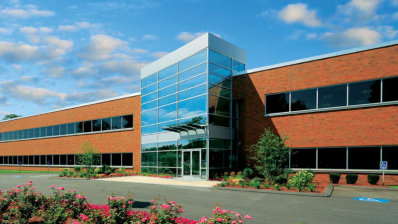Opportunity Zones, originally devised by the Economic Innovation Group (EIG), were established by Congress in the Tax Cuts and Jobs Act of 2017 to encourage long-term investments in low-income urban and rural communities nationwide. The program was meant to support existing businesses, grow new businesses, and finance much-needed real estate projects in low-income communities still recovering from the Great Recession. There are over 8,700 Opportunity Zones in the United States and its territories and while the program's tax benefits to investors are understood, consensus on whether this program is actually benefiting the communities in which these investments are made remains uncertain.
Here are a few things investors need to know about Opportunity Zones.
- Not all Opportunity Zones are created equal. There are roughly 8,700 Opportunity Zones across the US, many of which are located in rural areas while others may reside in the core of a major city.
- Generally, investors have only 180 days from the date that the capital gain from the sale of an asset is recognized to invest their eligible capital gains in a Qualified Opportunity Fund in order to defer federal taxes.
- To help maximize opportunity zone tax benefits, investors may want to consider contributing only eligible capital gains. Investors can generally invest non-capital gains into a Qualified Opportunity Fund (provided that the Sponsor approves of such investment), but typically only investments made with eligible capital gains receive the tax benefits. Importantly, if an investor makes the investment with non-eligible capital gains or a combination of eligible and non-eligible capital gains (i.e., a 'mixed-funds investment'), the investor should be sure to notify the sponsor and pay particular attention to the subscription agreement for the offering (in addition to consulting the investor's financial, tax, and legal advisors)
- Investors should evaluate the merits of the underlying investment in a Qualified Opportunity Fund as they would with any other commercial real estate investment. Tax aspects of such investments can be complex and may differ depending on the property or offering and on individual tax circumstances. Investors are strongly encouraged to seek advice from qualified tax professionals and/or legal experts regarding the tax consequences based on their particular circumstances.
- Exiting a Qualified Opportunity Fund is different than exiting a traditional commercial real estate private equity investment. Divestiture by a Qualified Opportunity Fund has many details that need to be considered in order to abide by the IRS regulations. Sponsors and investors, in most cases, must sell their interests in the Qualified Opportunity Fund and not the underlying asset(s) to maximize tax benefits.
- Qualified Opportunity Fund investments are typically a long-term play. While the potential deferral of capital gains tax may be appealing to investors, it's the potential forgiveness of eligible capital gains on the appreciation of the investment that could yield a greater proportion of tax savings in the long run.
Why consider investing in Opportunity Zones?
Opportunity Zones are considered by some to be one of the more powerful tax planning opportunities of our lifetime. Economic Innovation Group (EIG) reported in early 2018 that there is over $6 trillion in unrealized capital gains. Opportunity Zones are a chance for that money to be funneled into potentially tax-advantaged projects. The capital gains you choose to invest may come from a variety of sources '“ stocks, the sale of a business, other real estate projects, etc. as well as qualified 1231 gains '“ the Tax Act of 2017 allows you to take your capital gains and defer them for up to six years by investing them in a Qualified Opportunity Fund.
However, the potential deferral of gains is only one of the benefits. For any investment that is held in a Qualified Opportunity Fund for at least 10 years, any capital gains that would otherwise be incurred over that time span are permanently excluded. For a real estate development investment within a Qualified Opportunity Fund (QOF), as in the hypothetical scenario described within the video below, this could translate into almost $.50 of every dollar invested into a QOF retained by the investor rather than pay to the government ten years down the road.
Any QOF investment that is held for at least five years by the time the deferred gain is considered realized'“December 31, 2026 at the latest'“is eligible to receive a 10% step-up in basis prior to paying the deferred taxes. This means paying capital gains tax on only 90% of the original deferred capital gains. Starting December 31st, 2020, investors have just one year left in order to meet that five-year hold requirement.
As an investor, you should evaluate potential Opportunity Zone investments on the merits of the business plan, as well as on the basis of the tax-deferral benefits (consulting your tax and legal advisors) they provide, but be aware that such an investment may not facilitate the social impact or public good touted by lawmakers at its inception.
Tax aspects of such investments can be complex and may differ depending on the property or offering and on individual tax circumstances. Neither CrowdStreet or its affiliates offer tax or legal advice. Investors are strongly encouraged to seek advice from qualified tax professionals and/or legal experts regarding the tax consequences based on their particular circumstances.


